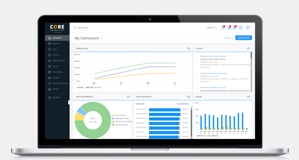
By virtue of the fact that you’re even reading this article you’re probably a savvy business person who enjoys managing a firm, and all the challenges that this entails.
Quite often people in this position find themselves in an echo chamber, where the systems they’ve implemented or the processes they’re using seem to be working well, and there is no reason to try new things. Indeed, the other decision makers and employees in the firm are all on-board, and content with the way things are running. Human beings are very reluctant when it comes to change.
Why create disruption when everything seems fine? The firm is profitable, the employees are happy, and you’ve worked hard to get to this point. Why look for trouble? As someone who has just gone through this, I want to share with you not only why you seriously need to disrupt your business, but also how we managed to do it.
Technology is the primary driver of disruption in both our business and personal lives. As a simple example, I hardly know anyone today who will hail a cab. Uber and Lyft took hold quickly and made taxis seem as obsolete as a horse and carriage. However, this is an example of disruption of an industry rather than an individual user. Taxi drivers need to reconsider their service model now that customers no longer need to stand out in the rain waiting for them to pass by; or be hoodwinked into the circuitous routes drivers might typically use which gouge the customer’s wallet; or suffer dirty, smelly cabs with surfaces they are afraid to touch.
In business, you’re the taxi driver, not the passenger. And while you think I’m being dramatic, trust me, I’m deadly serious. If you’ve read the news lately, you can’t escape the buzz surrounding artificial intelligence. Don’t get comfortable thinking that your job is immune to this. Whether you’re a cab driver, a waiter, a carpenter, a lawyer, a doctor, or even an architect or engineer, your days are numbered. And that also goes for those Uber and Lyft drivers. Autonomous vehicles will disrupt an industry that was a disrupter only five years earlier.
When I graduated from architecture school in 1986, computers were just entering the workplace. Thirty years later, there is hardly an architect or engineer alive who doesn’t spend the better part of their day using a computer, tablet, or mobile device to help run their firm and design their projects. At the accelerating pace of change, there will be more disruption in your lives in the next five years than in the past 20.
So buckle up and get ready for a world where ‘business as usual’ is a death knell.
 At BQE Software, we build commercial software used daily by more than 400,000 people. We also had designed systems to manage our company. Things were working perfectly: happy customers, happy employees. We were in a groove and all cylinders were firing nicely.
At BQE Software, we build commercial software used daily by more than 400,000 people. We also had designed systems to manage our company. Things were working perfectly: happy customers, happy employees. We were in a groove and all cylinders were firing nicely.
But, about four years ago, we saw the writing on the wall. Startups, unburdened by legacy systems and demanding customers, were cropping up everywhere and threatening to make us obsolete. Today we know that desktop software will soon be as popular as fax machines, but five years ago that wasn’t so obvious.
In fact, we would continually survey our customers, and they couldn’t see it coming. Four years ago, only ten percent of our customers surveyed had any plans to move to the cloud. Some considered the question itself laughable. Had we listened to where our customers thought they were going, we would be in serious trouble. Today, nearly 90 percent of our customers are in the cloud in some form or other.
The point here is that you can’t be complacent about where you are today. How you serve your clients today isn’t how you’re going to serve them tomorrow. And if you think things aren’t changing and I’m being melodramatic, please stop reading now. I’m wasting your time.
Four years ago, we put together a small team within our company, and tasked them with putting us out of business. You read that correctly. We decided that unless we became our biggest competitor, someone else would. It was an odd situation.
Basically, we were a bunch of old-timers hiring the youngest, smartest minds who hadn’t sipped our Kool-Aid. We told them to start from the ground-up, building everything fresh and forward-looking rather than based on any past assumptions. I can’t tell you how truly hard this was. Everything from our past was challenged: Is this particular process relevant today? What’s the use case for something we built previously? Just because we did it this way does that mean we need to continue, or is there another or better way? The list goes on and on.
We thought it would take 18 months. It took nearly three times as long, and involved twice as many people as planned. In the end, we had 70 people working full-time to kill our existing software—the very software that was affording us to pay their salaries. How peculiar is that?
We made it through and I’m so glad we did. Today, we are poised to take on the future, and our customers—some who have been with us for 20 years—were stunned to learn that we’ve catapulted ourselves out of our comfort zone. And since they’ve trusted us for all these years, they’re now ready to move their businesses into the future with us.

As for the services you provide today and the tools you use to support those services, I’d like to suggest that you create a team of people within your firm to challenge everything you’re doing. Make sure you have the brightest and youngest minds on this team as well since they’re able to see things in a way you really just can’t imagine.
To learn more about how your firm can self-disrupt to create value for your clients and ensure prosperity, attend my seminar at this year’s PSMJ THRIVE 2017 on October 3-5 in Denver. I’m also going to share some case studies of other firms that have managed to transform their business through disruption.
BQE Software will also introduce BQE Core®, a powerful, all cloud-based business management software that enables architecture and engineerings firm to quickly make informed decisions, increase productivity, and grow profits.
About the Author: Steven Burns, FAIA, Chief Creative Officer, BQE Software, is a licensed architect and a member of the College of Fellows of the American Institute of Architects. He sold his architectural firm in 2007 to work full-time on the startup he launched to create ArchiOffice and EngineerOffice, now mainstays in BQE's product line. He earned his Master of Architecture from the Harvard University Graduate School of Design and his Bachelor of Fine Arts from Syracuse University. His passions include ultra-endurance cycling (he's ridden as far as 522 miles without stopping) and working with Los Angeles Social Venture Partners to help innovative non-profits change the landscape for social justice.

BQE Software is a PLATINUM sponsor of PSMJ's THRIVE 2017, which takes place October 3-5 in Denver. Are you ready for two high-energy days of inspiration, networking, and fun? THRIVE 2017 is your chance to learn, to network, and to get an eye-opening perspective on what the world’s most successful A/E/C firms are doing right now to thrive. This unique annual event attracts senior-level executives from a wide range of A/E/C organizations located around the world. Registration is now open!




